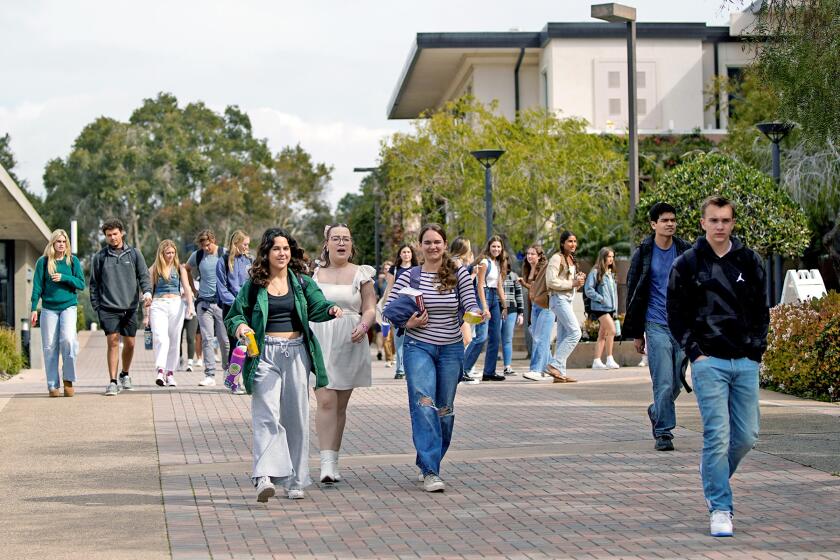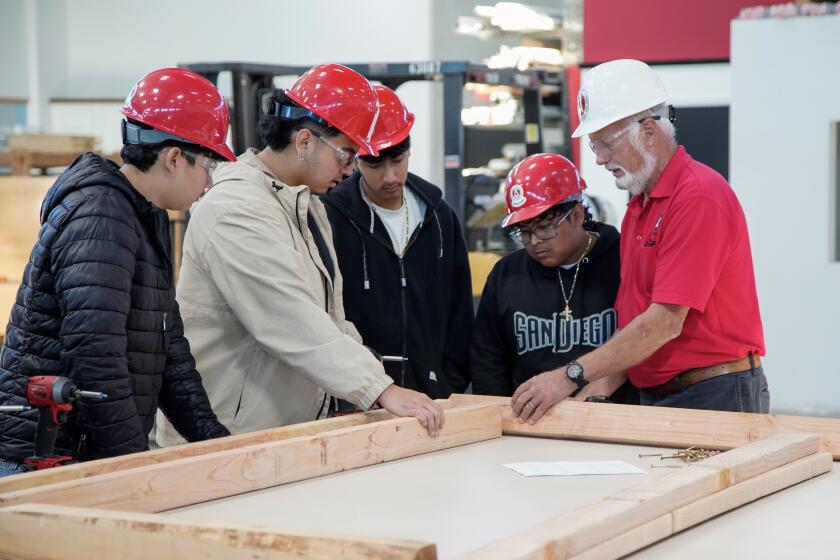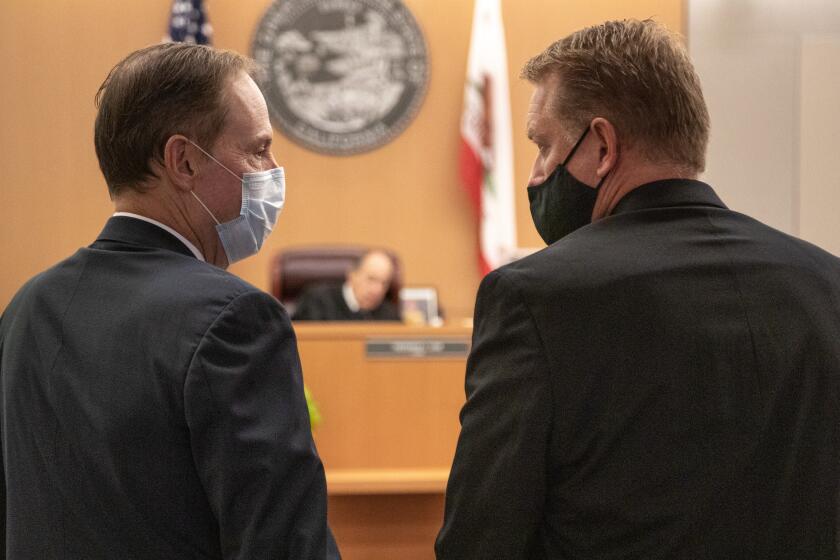SD high schools offer UCSD courses
Aliyah Harrison hopes to attend a UC campus after graduating from Point Loma High School this year, but she has wondered if she’s up for the academic challenge.
Some of those insecurities have fallen by the wayside since Aliyah enrolled in a UCSD science class offered at Point Loma High this year.
“I wanted to see what a UCSD science class is like, so I would be prepared,” said Aliyah, 17. “There are a lot of lectures, and it’s more up to you to take the initiative, do the work and keep up. It’s hard. But it’s a great class, and it’s actually college.”
Three high schools offer college courses — taught by UC San Diego professors — right on their campuses under a pilot program, billed as the first of its kind.
A collaboration between the San Diego Unified School District and UC San Diego Extension, the goal is to give students a chance to earn university credits, demystify higher education while cutting the time and cost of college once they get there.
“This gives qualified high school students access to UCSD courses, with full credit, for free,” said Ed Abeyta, director of precollegiate programs at UC San Diego Extension. “It is like AP, courses on steroids.”
Point Loma High, along with La Jolla and University City high schools, were selected for the pilot because their principals were among six to respond to a district call for volunteers, and because they had enough qualifying students to fill the classes, said Cheryl Hibbeln, San Diego Unified’s director of secondary schools.
The program started as San Diego Unified stepped up efforts to promote equity in the district by increasing access to rigorous college-prep programs among disadvantaged students.
However, absent from the list of participating schools are any in low-income neighborhoods, where students most need a leg up, said Andrea Guerrero, executive director of the nonprofit advocacy group, Alliance San Diego.
“The students who could benefit most from free college courses are not being given access to them right now,” Guerrero said. “I’d like to know that the district is committed to equity and it will be offering those courses in low-income neighborhoods.”
UCSD was not involved in the selection of schools for the pilot, Abeyta said. But the program was inspired by the goals of UC San Diego’s Strategic Plan, which identified the need to cultivate a diverse student body while ensuring that education is both easily accessible and affordable.
San Diego Unified and UC San Diego are already talking about expanding the classes to include more high schools as early as the fall. That could mean offering courses on more campuses or at a regional venue that could be used by multiple campuses.
UCSD first piloted a similar program at Cathedral and Westview high schools, where students paid for the courses. Abeyta said to be successful, the program needs both qualified students and adequate support from the school administration.
For San Diego Unified, the partnership fits into its broader effort to give high school students access to college before they earn a diploma. The district, like others, operates middle colleges (its newest recently opened at Lincoln High School) and other initiatives that allow students to take community college courses while in high school.
The UCSD program is the first to give students free access to UCSD classes on their campuses. The courses offered include college-level calculus, biology, sociology, engineering and earth sciences, with up to 35 students in each class — little over 100 at three schools.
Professors have stretched the quarter-system courses to fill out a high school semester. The additional time, and the smaller classes (35 compared to several hundred) have helped students adjust to the rigor while giving professors a more intimate classroom environment.
“This is the exact same course a student would take at UCSD — meaning I have to hold them to the exact same standard,” said Keefe Reuther, who teaches his class, “Evolutionary and Organismic biology,” at Point Loma High. “Most of them are doing well. They are up for it.”
Reuther’s lectures are fast-paced and often animated — enough to keep teenagers engaged at 7:30 in the morning. He routinely mentions helpful websites and makes book recommendations (On Wednesday he suggested E.O. Wilson’s Pulitzer Prize-winning “On Human Nature,” Stephen J. Dubner and Steven Levitt’s “Freakonomics: A Rogue Economist Explores the Hidden Side of Everything,” and Jared M. Diamonds’ “Guns, Germs, and Steel: The Fates of Human Societies.”)
“You have to pay attention, more than other classes,” Aliyah said. “The class keeps me interested. I’ve never been tempted to fall asleep.”
UC San Diego Extension offers oversight of the curriculum and the instruction. It also ensures that course units earned are transferable at all 10 university of California campuses.
Maureen.magee@sduniontribune.com
Twitter: @Maureen.Magee
Get Essential San Diego, weekday mornings
Get top headlines from the Union-Tribune in your inbox weekday mornings, including top news, local, sports, business, entertainment and opinion.
You may occasionally receive promotional content from the San Diego Union-Tribune.





